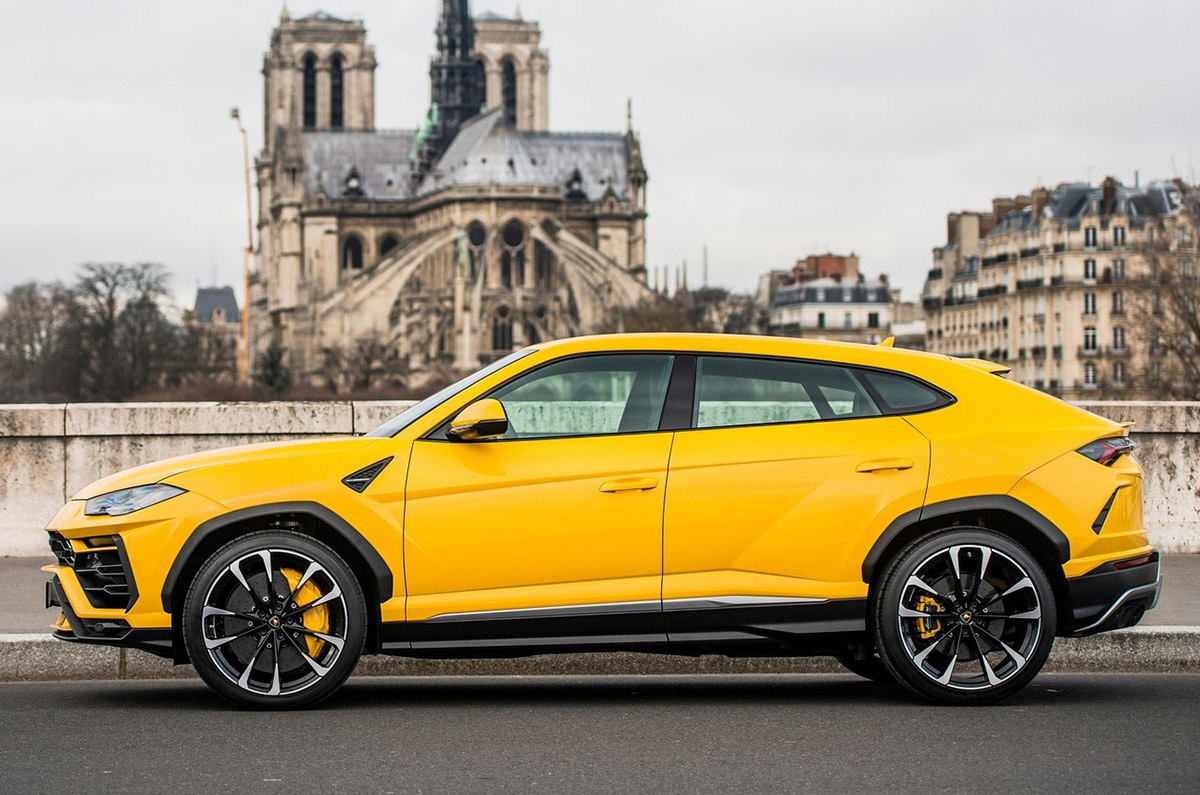
Lamborghini will introduce plug-in hybrid powertrains to all three of its current model lines within the next three years, before launching its first battery-electric vehicle by the end of the decade.
- Huracan, Aventador successors expected to be plug-in hybrid (PHEV) only
- Facelifted Urus expected to continue with conventional engine options in select markets
- Lamborghini eyes 50 percent CO2 emission reduction in cars by 2025
The brand’s three existing model lines will be electrified in 2023 and 2024, with the arrival of the facelifted Urus SUV and what are expected to be the successors to the Huracán and Aventador supercars. While the Urus will offer various powertrains where regulations allow, the Huracán and Aventador successors are likely to be sold exclusively as plug-in hybrids.
The move is part of Lamborghini’s Direzione Cor Tauri roadmap, driven by the need to reduce the firm’s environmental impact and under which the firm will invest more than £1.3 billion (around Rs 13,474.5 crore) in PHEV technology in the next four years. But Lamborghini boss Stephan Winkelmann has vowed to “keep the DNA” of the brand and “take it to the next level”.
Winkelmann refused to go into detail on the exact technical specifications of the powertrains planned for the supercars but told our sister publication Autocar UK, “It will underline the CO2 emissions on the one hand and the power output on the other.” The firm is aiming to reduce the CO2 emissions of its product line-up by 50 percent by the end of 2025.
Lamborghini Aventador, Huracan successors likely to offer greater performance
Winkelmann said that the cars will have performance “equal to or even better than today”. He confirmed that the Aventador and Huracán successors will use plug-in hybrid powertrains, rather than the supercapacitor system featured on the new, Aventador-based Sián FKP 37. He added that the Aventador successor would retain a V12, but didn’t specify that the Hurácan successor would use a V10, potentially signalling a change in engine for that model.
While Winkelmann said the Sián’s mild-hybrid powertrain is “a good bridge to test the reaction of our customers” to electrification, its limited electric capacity compared with a PHEV means that it wouldn’t meet Lamborghini’s future emissions targets.
Instead, the firm is likely to use a system similar to that seen on Ferrari’s SF90 Stradale, with an internal combustion engine powering the rear axle, an electric motor powering the front axle and torque vectoring used to balance the output.
Winkelmann added that the firm was working to negate the potential performance disadvantages of PHEV technology. “Batteries also add weight, the alleged enemy of performance,” he said. “At Lamborghini, however, we are used to balancing out weight additions. An increase in performance often leads to the addition of weight in the first step. Our cars excel in power-to-weight ratio, so we have a very good starting point for hybridisation.”
Winkelmann said that expanded use of lightweight carbonfibre and other new technologies will be “crucial” in compensating for the extra weight of the PHEV batteries.
Lamborghini to “celebrate” the combustion engine prior to launch of PHEVs
Before Lamborghini’s hybridisation programme begins in 2023, Winkelmann said that the firm would use the next two years to “celebrate” the combustion engine and “pay homage to the brand’s glorious history and iconic products”.
Two V12 models are due this year, one of which is understood to feature electrified supercapacitor technology. While Lamborghini has refused to give details, it is understood at least one of the models will feature retro-styling inspired by some of the firm’s previous supercars.
Winkelmann added, “Our naturally aspirated engines, as our super sports cars in general, remain the absolute benchmark in the industry. And looking into the future, they can be considered last of its kind. But don’t worry, we still have one or two surprises planned celebrating our combustion engines.”
Lamborghini for India
Coming to the Indian market, Lamborghini earlier this year revealed that it had sold over 100 units of the Urus SUV in the country since its launch in 2018. The Italian manufacturer also launched the Urus Pearl Capsule Edition in India – a preconfigured Urus that’s available in a two-tone colour scheme and with many other interesting bits.
It remains to be seen if the plug-in hybrid derivative of the Urus will make its way to India following its global debut. As for the replacement for the Aventador and the Huracan, with Lamborghini offering both model lines in India, it is likely that we could see the all new models arrive sometime following their debut.

